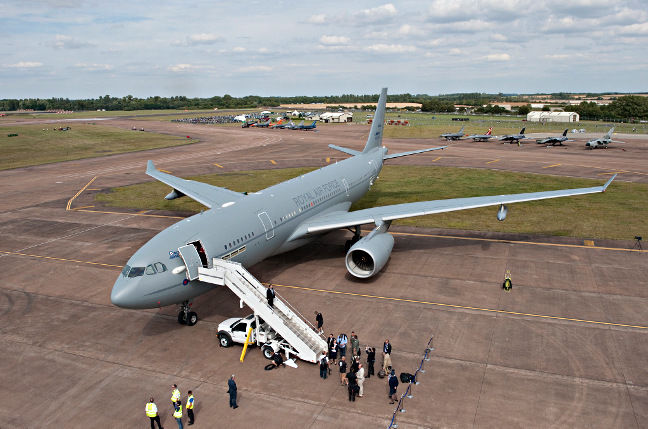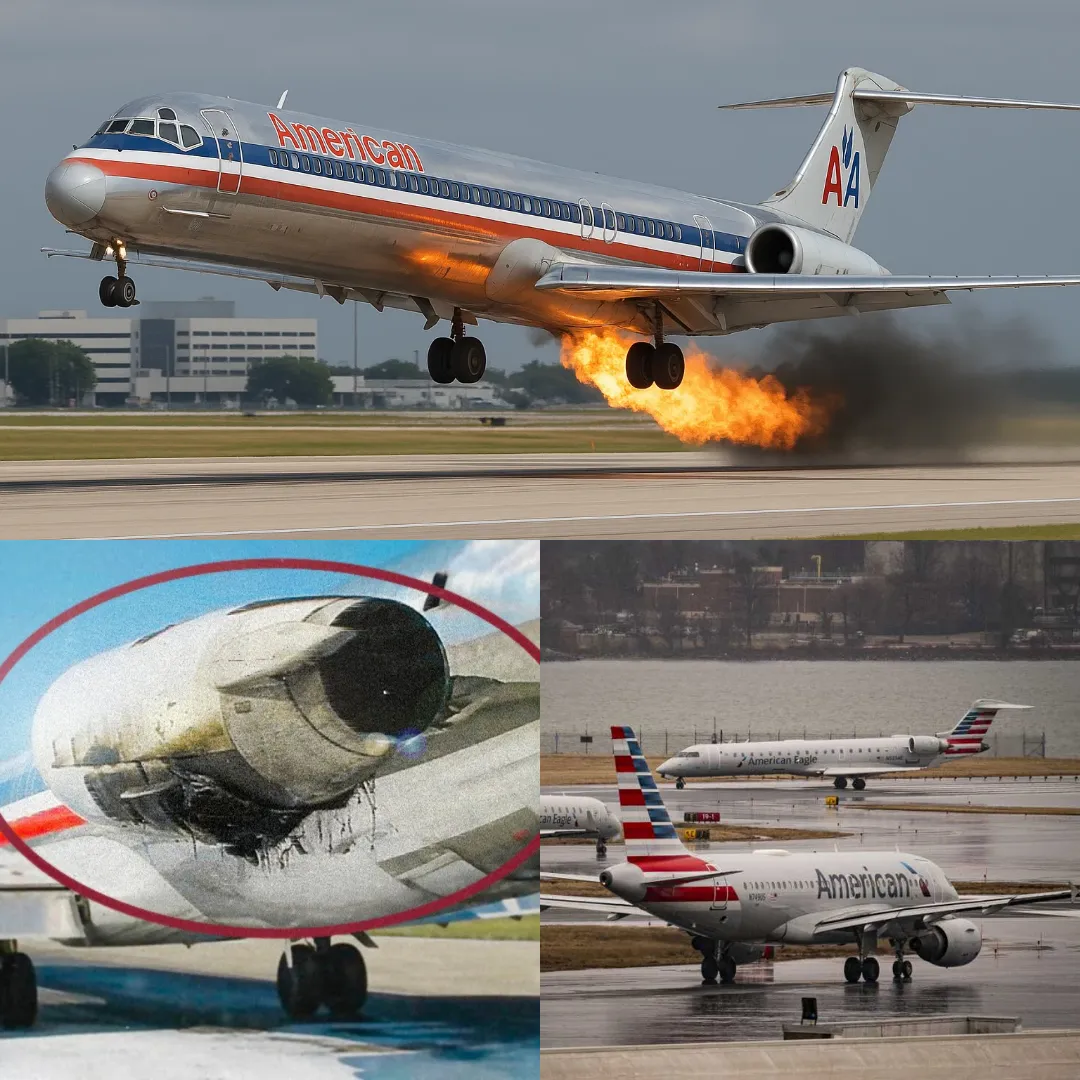
On February 9, 2014, passengers aboard Voyager Flight 333, an Airbus A330 operated by the United Kingdom’s Royal Air Force (RAF) under the command of Air Tanker Services Limited, experienced what no one would have expected on a routine military mission—sudden and violent weightlessness, followed by a terrifying free fall.
What started as a normal flight from RAF Brize Norton in the United Kingdom to Camp Bastion in Afghanistan turned into a nightmare, with the aircraft experiencing severe and unexpected turbulence. This shocking event, which caused the aircraft to dive 4,400 feet within seconds, was later found to have been caused by a seemingly minor issue: a camera left unsecured in the cockpit.
Voyager Flight 333 was operated by a military-configured Airbus A330, a multi-role tanker transport (MRTT) aircraft used by the RAF for air-to-air refueling and passenger transport. This particular flight was carrying 189 passengers, including military personnel, engineers, and a doctor, along with a crew of two pilots and eight cabin crew members.
The mission was routine, with no immediate weather or operational concerns. The pilots had completed their pre-flight checks and boarding was underway. However, what began as a seemingly typical departure would soon evolve into a shocking emergency.
The captain of the flight, a seasoned RAF officer with 30 years of experience, was in charge of the aircraft. The first officer, though experienced, was still relatively new to the Airbus A330, and the relief pilot, although highly qualified, was primarily a simulator instructor. The crew, while well-trained in military operations, had not anticipated the chaos that was about to unfold.

The flight started without issue, and as they reached their cruising altitude of 33,000 feet, the crew began to relax. However, the captain had one unusual task in mind: taking photos of the passing landscape. It was during this brief moment of distraction that the catastrophe began.
As the captain adjusted his seat to get a better angle for his photography, the camera he had placed between the armrest and side stick became wedged. This seemingly minor oversight would soon lead to catastrophic consequences.
As the captain attempted to adjust his seat, the camera wedged itself between the side stick and armrest, causing the aircraft’s pitch to rapidly increase. The first officer, who was taking a break in the galley, suddenly found himself weightless as the aircraft began pitching violently forward.
The passengers, unstrapped and caught off guard, were thrown against the ceiling. Some passengers were knocked unconscious, while others suffered head and neck injuries. The crew, including the first officer, scrambled to get back into the cockpit to assess the situation.
Inside the cockpit, the captain was frantically trying to regain control of the aircraft, but his side stick was jammed due to the camera. Despite his attempts to disconnect the autopilot, the aircraft continued its nose-down dive, with the descent rate increasing to a terrifying 15,800 feet per minute.
The first officer, crawling upside down across the cockpit, attempted to assist the captain, but the dual inputs from both side sticks caused further confusion and made it even harder to regain control. The aircraft’s protection systems, which were designed to prevent dangerous speeds and angles, prevented the situation from becoming even worse, but the aircraft’s descent continued at alarming speed.
The crew’s inability to regain control was compounded by the fact that they had no idea what was causing the malfunction. They initially assumed the issue was related to the autopilot or the flight controls, but as they continued to struggle with the aircraft, they realized that something far more simple was at play.

A small fluctuating pitch-down input, originating from the captain’s side stick, had been detected about two minutes before the violent nose-down pitch began. This input was too small to disconnect the autopilot, but it was enough to start the sequence of events that led to the aircraft’s rapid descent.
As the investigation later revealed, the root cause of the incident was not a technical failure, but a simple human error: the captain had placed his camera in an unsecured location between the armrest and side stick.
When the captain adjusted his seat, the camera wedged itself between the two, causing the side stick to move forward. This small, seemingly harmless action triggered a catastrophic chain of events, as the side stick’s movement was enough to initiate the autopilot’s disconnection and send the aircraft into a rapid nose-down dive.
The cockpit voice recorder revealed that the captain, upon realizing that the aircraft was diving uncontrollably, attempted to pull the side stick back, but it was stuck due to the camera. In his panic, he repeatedly tried to disconnect the autopilot, not realizing that it had already been disengaged. The first officer, upon returning to the cockpit, also attempted to regain control, but the simultaneous inputs from both side sticks created further complications.
Fortunately, the Airbus A330’s protection systems, which limited the aircraft’s pitch to a maximum of 15 degrees nose down, prevented the situation from becoming even more dire. However, the aircraft still lost 4,400 feet of altitude and reached speeds of 358 knots—far above the aircraft’s safe limits.
The crew’s response to the emergency was hampered by their lack of understanding of the true cause of the problem. The initial assumption that the autopilot had malfunctioned clouded their judgment, and it wasn’t until the crew investigated the side stick inputs that they realized the cause of the issue.

The captain’s failure to follow established procedures for cockpit organization and the improper storage of personal items in the cockpit had led directly to the malfunction. Had the camera been secured properly, the incident would never have occurred.
In the aftermath of the incident, the investigation found that the event was caused by a combination of organizational failures and human error. The captain had violated standard protocols by allowing personal items, including the camera, to be stored in unsecured locations within the cockpit. Additionally, the crew’s failure to follow established procedures for cockpit organization and the management of personal items contributed to the severity of the incident.
The investigators also noted that the crew’s failure to properly secure the camera and the lack of vigilance regarding cockpit organization had allowed a minor issue to escalate into a life-threatening emergency.
The incident served as a stark reminder of the importance of cockpit discipline and adherence to established procedures. It also highlighted the dangers of complacency in the cockpit, particularly when operating aircraft with complex systems. The failure to secure personal items, even something as seemingly harmless as a camera, can have disastrous consequences.
![Airbus Voyager KC.3 ZZ335 main gear tire blowout on take-off at Red Flag 24-1, January 2024 [Album] : r/WarplanePorn](https://i.redd.it/airbus-voyager-kc-3-zz335-main-gear-tire-blowout-on-take-v0-fwpjjsjx07fc1.jpg?width=1600&format=pjpg&auto=webp&s=4263cc173c0d49f87d94931adaea9119da12a3fa)
The lesson learned from this incident is clear: pilots must never allow themselves to become complacent, and they must always follow procedures to ensure the safety of their passengers and crew.
In the end, the pilots of Voyager Flight 333 were fortunate to avoid a more tragic outcome. The incident could have easily led to a crash, but the Airbus A330’s protection systems, combined with the crew’s eventual recognition of the problem, prevented a worse fate.
However, the incident raised important questions about cockpit organization, crew training, and the importance of adhering to standard operating procedures. It also served as a reminder that even the smallest oversight, such as leaving a camera unsecured, can have catastrophic consequences in the world of aviation.
As a result of this incident, Airbus issued new guidelines regarding the storage of personal items in the cockpit, and Air Tanker Services Limited implemented additional training to reinforce the importance of cockpit discipline and adherence to procedures.
The lessons learned from Voyager Flight 333 will undoubtedly continue to shape aviation safety protocols for years to come, ensuring that such a terrifying experience never happens again.

-1750691235-q80.webp)

